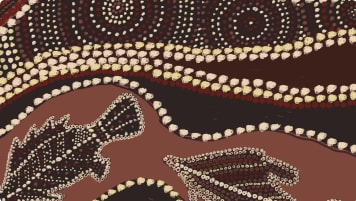Gwion Gwion Rock Art (Bradshaw Paintings)
Bradshaw's discovery of rock art in the Kimberley remained a challenge for many decades .This article for small group tours of senior couples and solo travellers into the Kimberley provides information about the rock art and the re-discovery.
13 Jun 21 · 11 mins read
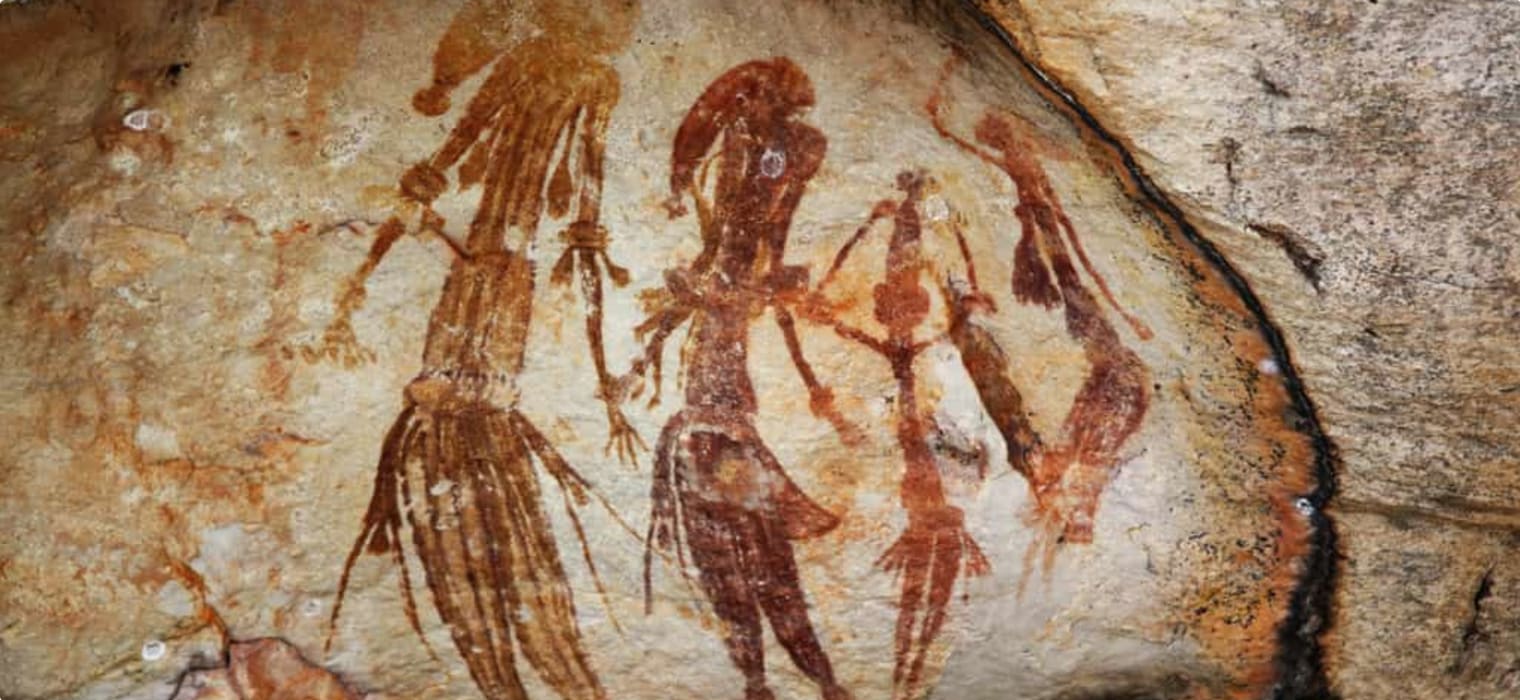
Gwion Gwion Rock Art (Bradshaw Paintings)
By Marco Stojanovik
Gwion Gwion art – formerly commonly known as ‘Bradshaw paintings’ – is a sophisticated tradition of Kimberley rock art found in the north-west region of Western Australia. The art displays distinctive spindly human stick figures s ornamented with accessories such as bags, headdresses, and tassels, and carrying spears and boomerangs. Dispersed across approximately 100,000 sites spread over an area of 50,000 square kilometres, they are believed to be the oldest figurative paintings in the world.
The drawings first became known to Europeans in 1890 when the pastoralist Joseph Bradshaw (from which the term ‘Bradshaws’ comes) noticed an unusual type of rock art on a sandstone escarpment. A talented artist, Bradshaw was able to copy what he saw, presenting his findings to the Victorian Geological Society. Since then, the beautiful prehistoric art has arguably become the most famous on the continent of Australia, widely acclaimed for their elegant and highly distinct style.
This article explores Bradshaw’s discovery of Gwion Gwion rock art, as well as the tradition’s characteristics, dating, and significance. It is intended as background reading for Odyssey Traveller’s small group Tour of Australia’s Kimberley and is part of a continuing series of pieces on Aboriginal art, culture, and settlement, and the ancient landscapes of Australia. Our tours are for both the mature and senior traveller, as part of a couple or as a solo traveller.
Much of the information is sourced from Adrian Parker, John Bradshaw and Chrid Done’s A Kimberley Adventure: Rediscovering the Bradshaw Figures.

Joseph Bradshaw’s Expedition of Discovery
Jospeh Bradshaw came to the Kimberley looking to make a name for himself, inspired by the exploits of Australian explorers and navigators, particularly the glowing reports of the region by Phillip Parker King and Alexander Forrest. Following the devastating collapse of the Victorian economy in 1890, the ambitious young man turned his attention to this relatively unknown part of the continent, forming a syndicate to acquire grazing land.
Before ever actually visiting or inspecting the country – his attempt in June 1890 was thwarted by an absence of available vessels to take him further north from Derby – Bradshaw convinced his syndicate to apply for pastoral land available on the Prince Regent River. Following King’s positive reports of the land when sailing up the river, Bradshaw would have imagined this a prime location.
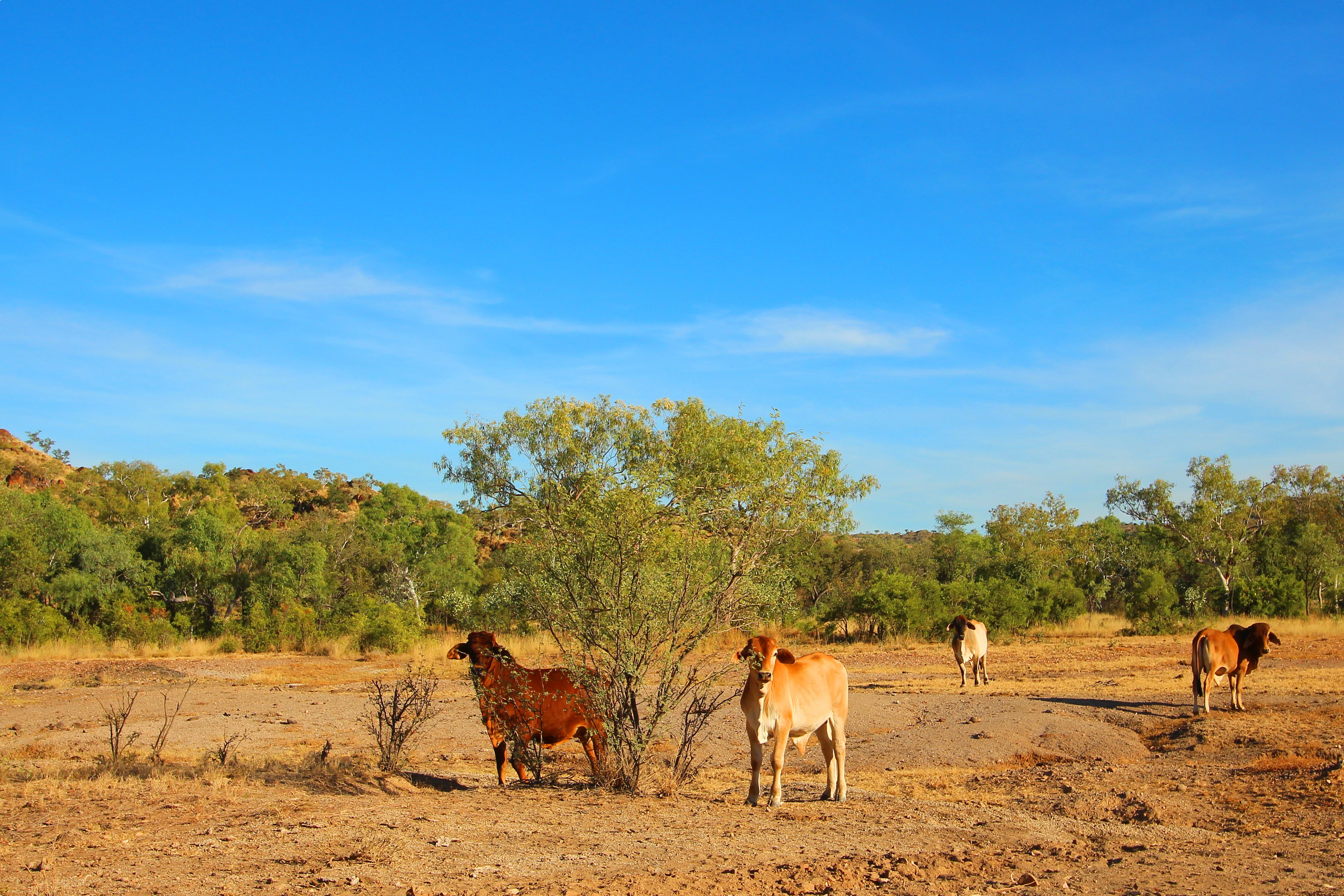
On 31 October 1890, the syndicate received approval for 20 blocks of land of 50,000 acres each, a total area of one million acres of land, sight unseen, along both sides of the Prince Regent River. Bradshaw then asked his brother Fred and Victorian sheep farmer William Tucker Allen to join him on a second attempt to inspect the leases, this time from the north.
With only a small amount of information available on this area of the Kimberly, the men left Melbourne on the steamer Aramac on 31 January 1891. Stopping in Darwin, they engaged Hugh Young, a recent Dookie Agricultural College graduate in Victoria and two Larrakeyah Aboriginals. Here they waited for three weeks to be taken to the town of Wyndham, which on arriving they found had been flattened by a cyclone just two days before.
Bradshaw was advised by the Government Resident not to venture into the Prince Regent River country with fewer than ten men, but this would have meant seven extra horses, packs, and a doubling of provisions. This would not do as Bradshaw was under instruction to keep the costs of the exploratory expedition down, due to the large sums already paid for the leases. Instead, a party of six men left Wyndham on 9 March, with six horses for riding and five for their packs.
The party soon encountered difficulties. Travelling in the aftermath of the Wet season, sodden ground, swollen creeks and rivers, and storms made for a miserable time. To make matters worse, Bradshaw’s hand-drawn map of the area near Wyndham proved useless and it is presumed he quickly lost his bearings, plunging into unknown country. Although by 1891 much of the Kimberley coastline had been charted and the mouths of most major rivers located, almost nothing was known of the vast interior and its river systems, covering an area one and a half times the size of Victoria.
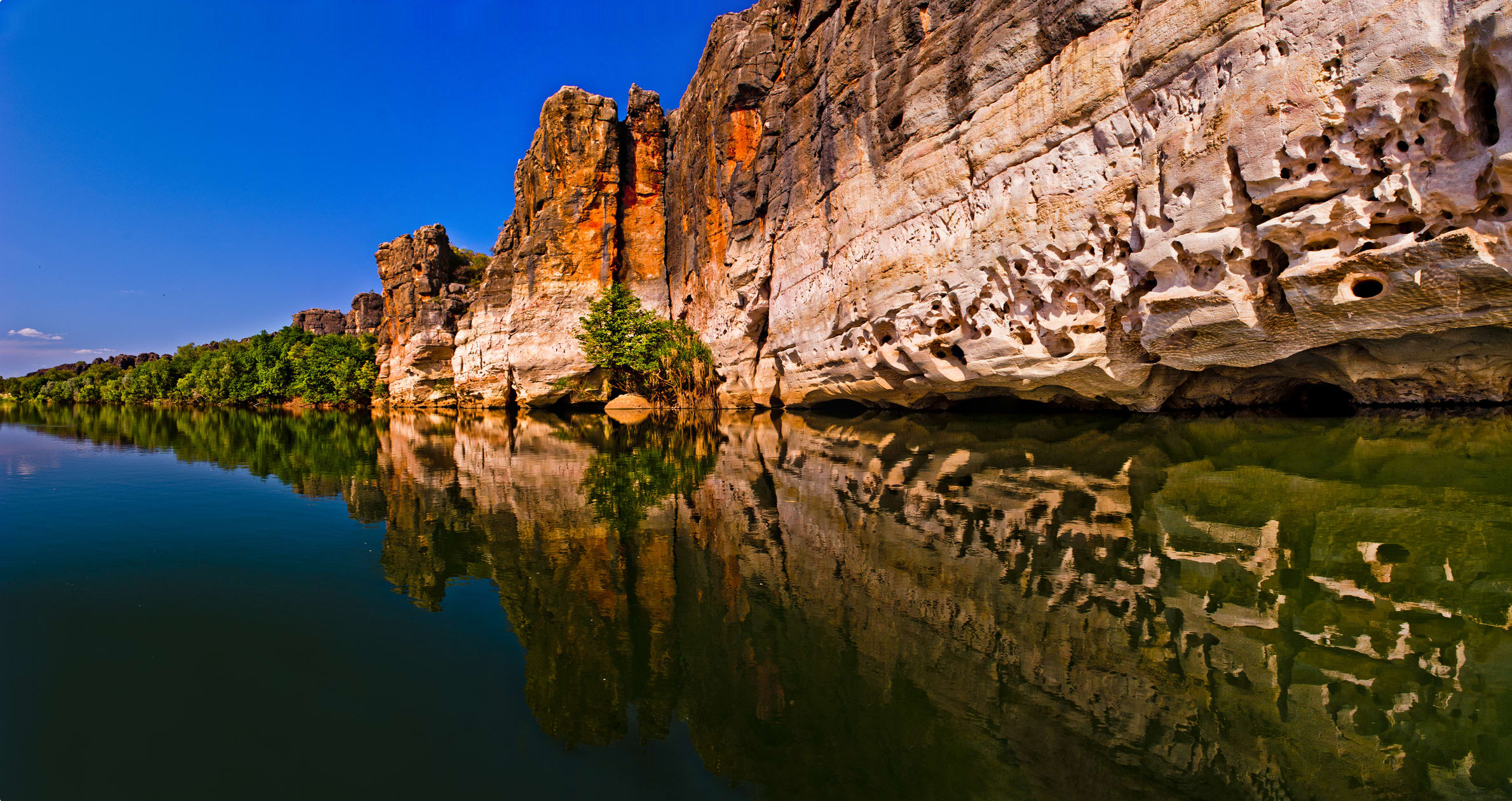
On 16 April, after almost six weeks travelling through rugged terrain, the two Bradshaw brothers followed what they presumed to be the Prince Regent River on their blocks of land to arrive at a large cascade of water descending through a narrow gorge. Tethering their horses, they continued on foot, climbing up the west bank of the river through vines and trees growing from fractured sandstone.
The area soon opened onto a great pile of immense boulders in a secluded chasm, where something unusual caught Joseph Bradshaw’s eye: numerous Aboriginal rock paintings of elegant figures. These were quite unlike the Wandjina spirit figures, the other major art form painted by the Kimberley tribes, which were already familiar to Europeans, first sighted by the explorer Lieutenant (later Sir) George Grey in 1838.
The next day Bradshaw returned and completed four sketches of the exquisite and previously undocumented art, which he described “as being of great antiquity”. Bradshaw presented the illustrated account of his findings to the Victorian branch of the Royal Geographical Society in 1892 in a paper titled ‘Notes on a Recent Trip to Prince Regent River’. In it he commented on the art’s fine detail, the colours, such as brown, yellow, and pale blue, and he compared it aesthetically to that of Ancient Egypt.
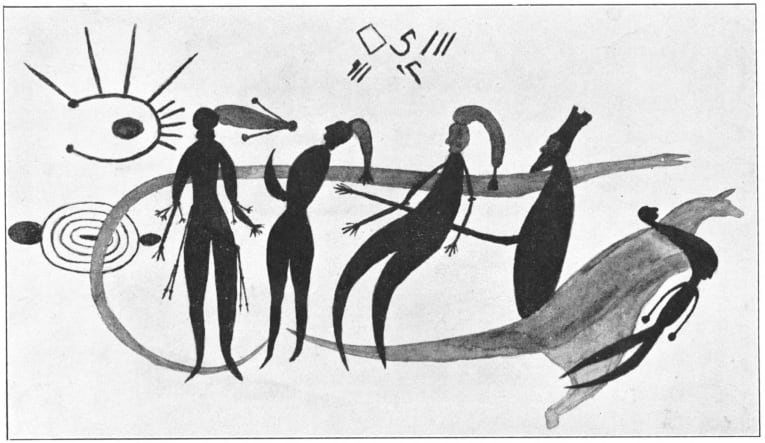
Encouraged by the writings of Joseph Bradshaw, the anthropologist A. P. Elkin led the first expedition to the Kimberley region in 1938 with the specific goal of studying and recording the art and culture of the area. The German-based Frobenius Institute Expedition to the Kimberley followed in 1938, during which they named the art style after Bradshaw. In contemporary times the rock art is referred to and known by many different names as per the local languages of the traditional owners in the Kimberley. The most common name is Gwion Gwion.
The Distribution and Characteristics of Gwion Gwion Art
The distribution and appearance of the Gwion Gwion paintings are quite distinctive. They contrast greatly with the more abstract 3,500-year-old Wandjina tradition, which was still painted by the hunter gathers living in the region in at the time of European colonisation.
The paintings are found predominantly in the sandstone regions of the west and central Kimberley, particularly in the Mitchell Plateau and Gibb River sections. However, isolated examples have also been found in several scattered locations in the east, such as the Napier Range, and at the far eastern border of the Kimberley.
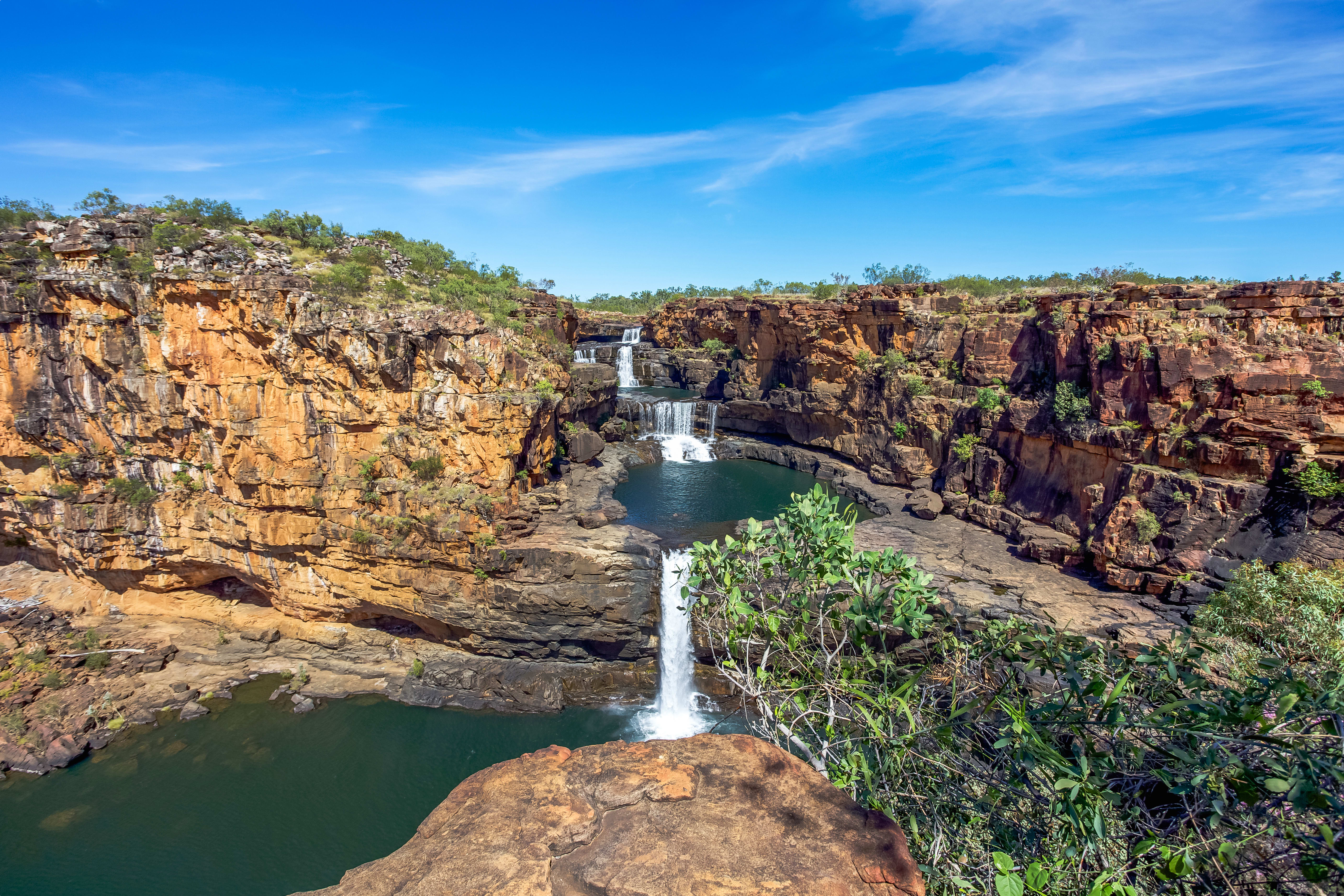
They are primarily painted where a suitable rock shelter is found, such as in raised small caves at cliff faces and in the protection of overhanding rock ledges. This contrasts with Wandjina art, which is distributed across limited isolated sites. Also unlike Wandjina, Gwion Gwion paintings are rarely found on ceilings, but rather on vertical rock surfaces.
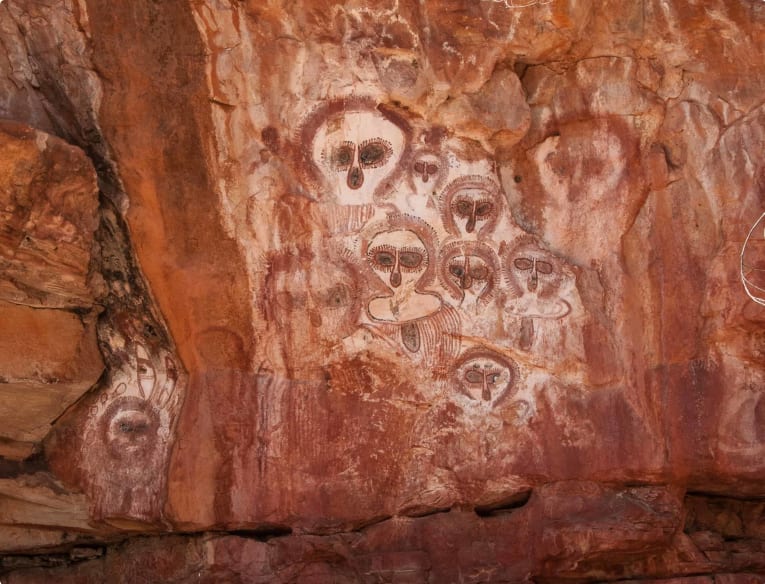
Very different to any other known Aboriginal rock art found in Australia, the Gwion Gwion paintings depict graceful, elongated human silhouette figures, which appear to be suspended in the air or in a dynamic style that suggests leaping, dancing, running, fighting, hunting or lovemaking. In addition, the figures are decorated with a diversity of objects such as belts, headdresses, hair adornments, tassels possibly clothing. Other material culture is also sometimes depicted, such as boomerangs, spears, and wands.

With the paintings believed to date back to the paleolithic period, before 10,000 BCE, their features are highly unusual considering accepted notions of world history. Typically, paintings from this period use animals as the primary subject. And, as the depicted body adornments are usually found in agricultural societies that have developed hierarchical systems of status, this would suggest whoever did the art was portraying a developed culture. However, it is believed that these types of societies only developed around 10,000 years ago, long after the first Gwion Gwion paintings. A re-writing of the timeline of human societies may be in order.
Types of Gwion Gwion Figures

The figures in the Gwion Gwion art are commonly sequenced into four categories, based on the observation of the archaeologist Grahame Walsh who studied the art rock sites between 1977 and 2007:
- Tassel figures are adorned by characteristic multi-strand tassels swinging from their arms and waists. Various other accessories can also be recognised, such as arm bands, conical headdresses, and boomerangs. This style is the earliest, most detailed, and most extensive.
- Sash figures appear similar to Tassel figures, but with a more robust body and smaller legs and feet, and with a different mixture of accessories. The biggest change is the replacement of the tassels with a three-pointed sash or bags attached to the figures’ belts.
- Elegant Action Figures are quite different from the Tassel and Sash figures, in that they are almost always depicted in action kneeling, running, or hunting with boomerangs and barbed spears. Their standard form is fairly basic and undecorated. They are difficult to pinpoint in the chronology of the other styles because they are the only figures neither painted over earlier works or have other figures superimposed over them.
- Clothes Peg Figures were named after their resemblance to wooden clothes pegs. Modern historians also use the term ‘Straight Part Figures’, as they are typically portrayed in a stationary linear posture. The figures sometimes adopt an aggressive stance and are shown in battle, often armed with multi-barbed spears, spear throwers and boomerangs. Segments of their bodies (arms, feets, waists) also sometimes appear to be missing. This is because the different colour pigments, such as whites and yellows, have faded over time.
Dating
Scholars believe that many of the paintings are thousands of years, if not tens of thousands, of years old and are among the oldest yet discovered in the world. However, determining their exact age has been a challenge. This is due to a lack of organic matter in the paintings: the iron oxide pigments have lithified and assimilated to become part of the rock itself rather than a surface covering. As such, radiocarbon dating is not possible.
Recently, however, researchers have been using several new methods to attempt to date the art, with some success. The oldest painting, a tassel Gwion Gwion figure, has been dated at 17,000 + years old, determined by dating a fossilised mud wasp nest that had been built over the painting.
This gives a minimum age, however, rather than an actual age of the painting. Archaeologists believe the paintings could date back to after the peak of the most recent glacial maximum, which is dated between 26,500 and 20,000 years ago. At this point conditions became so harsh, and the majority left the Kimberley. It is upon their return, that the Gwion Gwion paintings believed to have appeared.
If they are as old as they appear, the art would be at least four times older than the pyramids of Egypt. It would also be a comparable age to the Palaeolithic Grotte Chauvet paintings in France, which have been dated at 30,000 years-old.
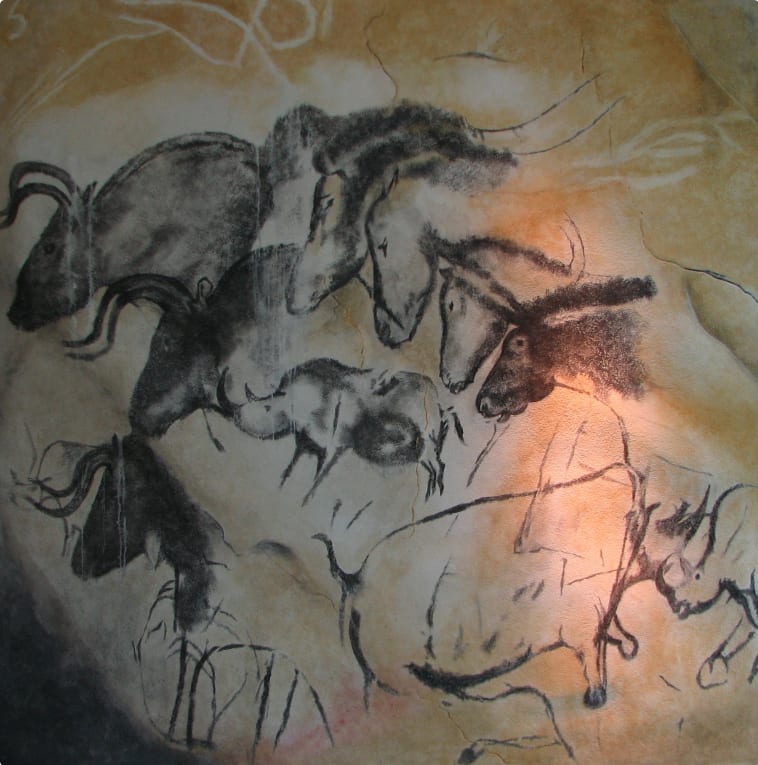
The academic community generally accepts 5,000 years before present for the end of the Gwion Gwion artistic style, coinciding with the start of the Wandjina rock painting tradition. If this is correct, it would mean the Gwion Gwion tradition was produced for many millennia.
Indigenous Knowledge
The origins of the Gwion Gwion remain shrouded in mystery, with Aboriginal elders of the Kimberley very cautious about sharing knowledge. Since the European discovery in the late 19th century until recent times, many elders stated that the images were “before their time” and that they know nothing about them.
According to Aboriginal legend, it was the mythological cave bird, Gwion, who pecked the rocks until their beaks bled and then painted the imaged with their tail feathers. Over time, there were imitated by human artists as they moved across the land. However, because the artwork was painted Gwion, the Aboriginal people claimed they were unable to interpret its significance.
In more remote caves, locals have explained the paintings as done by “different people to us”, not the work of their ancestors, but of a tall, thin-bodied, mythical race.
In recent years, however, some Indigenous communities have assimilated these ancient images into their culture with an explanation of their origin and significance. In 1992, Ngarinyin Elders revealed the connection between Gwion Gwion rock paintings and Wunan law of blood and land, as the paintings communicate legal, familial, and environmental responsibilities passed down through generations. In doing so, they have used the images to support claims for native title rights involving the Kimberly region.
However, like all indigenous paintings, the Gwion Gwion hide many layers of knowledge, meaning that much of their significance remains opaque to us.
Tour of the Kimberley
Odyssey Traveller visits the Kimberley region as part of our Tour of Australia’s Kimberley and our Outback Tour of the Northern Territory and Western Australia. Odyssey Traveller’s outback small group package tours are designed especially for mature and senior travellers who want an authentic experience of the fascinating Kimberley region.
Our Tour of Australia’s Kimberley begins and ends in the city of Broome, home to iconic Cable Beach, dinosaur remains at Gantheaume Point, a world-famous bird sanctuary at Roebuck Bay, and a fascinating history as a centre of pearling. From Broome, we head along the pristine Indian Ocean Kimberley coast and then turn along the Gibb River Road, making side trips to Windjana Gorge National Park and Tunnel Creek National Park, beautiful Bell Gorge (particularly verdant in the wet), and the easily accessible Galvans Gorge. We head onto the Mitchell Plateau – for many the last frontier of the Australian outback – to admire ancient Aboriginal rock art and the vast Mitchell Falls.
Back on the Gibb River trail, we spend the night at El Questro, near the Northern Territory border, a wilderness park based around Emma Gorge, Chamberlain Gorge, and the Pentecost River. El Questro offers a range of accommodation, from tented cabins to luxury suites in the old El Questro station. Leaving the North Kimberley, we pass Kununurra and Lake Argyle by and make a day tour to Purnululu National Park, where we see the Bungle Bungle range, Piccanniny Creek lookout, Echidna Chasm and Cathedral Gorge. Finally we return to Broome and the West Kimberley, passing through the historic towns of Halls Creek and Fitzroy Crossing.
Our Outback Tour of the Northern Territory and Western Australia explores the Kimberley, Purnululu, Tiwi Islands and Arnhem Land. The tour heads out from Darwin to Timber creek, before then heading west through to Kununurra, and delving into Western Australia’s iconic Kimberley region. We then book a light aircraft to visit and stay at Purnululu.
Returning to Kununurra you enjoy a full day scenic flight and tour of the Kimberley taking in icons such as Mitchell falls. After 5 nights in Western Australia, your small group tour returns to the Northern Territory transferring to Katherine and to Jabiru in the UNESCO listed Kakadu National Park. After 3 days exploring the park, the group takes a flight to Nhulunbuy/Yirrkala in the incredible Arnhem land. Returning to Darwin after 6 nights in these amazing UNESCO parks, the group travels with their guide travel out to the Tiwi Islands for 2 nights before returning to Darwin.

Articles about Australia published by Odyssey Traveller:
- Uncovering the Ancient History of Aboriginal Australia
- Aboriginal Land Use in the Mallee
- Understanding Aboriginal Aquaculture
- Mallee and Mulga: Two Iconic and Typically Inland Australian Plant Communities (By Dr. Sandy Scott).
- The Australian Outback: A Definitive Guide
- Aboriginal Art
For all the articles Odyssey Traveller has published for mature aged and senior travellers, click through on this link.
External articles to assist you on your visit to the Kimberley:
- Australia.com: Guide to the Kimberley
- 10 Must Visit Attractions in the Kimberley
- Broome’s History in a Pearl Shell
- The West Kimberley, Western Australia
- The Kimberley
- Broome, the pearl of Western Australia
- Kimberley’s hidden world of Indigenous rock art revealed by researchers
We acknowledge Aboriginal and Torres Strait Islander peoples as the First Australians and Traditional Custodians of the lands where we live, learn and work. We pay our respects to Elders past, present and emerging.
Related Tours

13 days
May, Jun, Jul, Aug, SepSmall group tour of Australia's Kimberley
Visiting Western Australia
Escorted small group tour of the Kimberley. We explore and visit The Bungles, Bell Gorge, Mitchell plateau & Halls Creek in the dry season. Amazing landscapes intertwined with Aboriginal communities resident more than 45,000 years.
From A$15,390 AUD
View Tour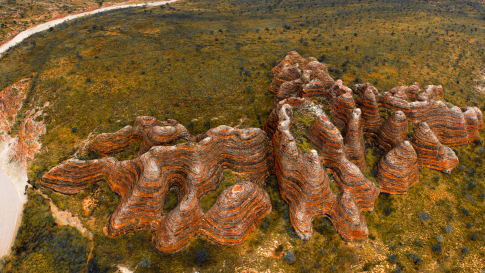
19 days
Sep, Apr, May, Jun, Jul +2Kimberley, Purnululu, Tiwi Islands and Arnhem Land
Visiting Northern Territory, Western Australia
Small group tour touring most of the Australian territory, travelling through the outback and visiting many of the famous sights as well as off the beaten track locations, giving you the opportunity the explore and meet our people in the most remote locations and far north Kakadu and the Kimberley.
From A$14,995 AUD
View Tour
days
Jun, Jul, Sep, Feb, Mar +1Darwin and Kakadu small group tour
Visiting Northern Territory
Explore and learn as part of a small group tour for seniors on this package tour to Darwin and Kakadu National park, a UNESCO world heritage site. This program also visits Arnhem land. Our focus is on ecology, landscapes and history on this 14 day program in the far north of the Northern Territory.
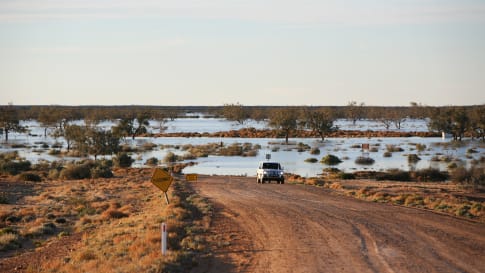
65 days
MarLong tour of Australia for a small group
Visiting New South Wales, Northern Territory
Small group tour for senior couples and solo travellers touring Australia. Travelling through the outback and visiting many of the famous sights as well as off the beaten track locations. Learn about the history of the people who explored the deserts, from indigenous communities to Europeans, as well as Burke and Wills, visit White Cliffs, Marree and far north Kakadu and the Kimberley.
From A$48,995 AUD
View TourArticles

Aboriginal Art
Senior and mature couples and solo travellers remain curious but often informed about the role Aboriginal art plays in the indigenous community and the various styles. This article seeks to provide a platform for this collection of small group tours of upto 15 people into the Australian outback where often Aboriginal art styles are encountered.

Aboriginal Rock Art in the Kimberley, Australia
The Kimberley is explored on a small group tour for mature and senior travelers, couples or singles. Both Aboriginal community is studied and an appreciation of the wet and dry seasons. This guide on the Kimberley assists the traveler as you start from Broome and travel round via Halls creek and Purnunulu national park over some 17 days in a group of up to 12 people.

Ancient Aboriginal trade routes of Australia
Ancient Aboriginal trade routes of Australia Trade was a central part of life for Aboriginal people prior to the British settlement of Australia. Trading routes criss-crossed the nation, dispersing goods, information, technologies and culture thousands…
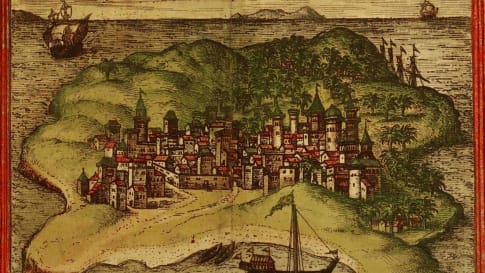
Archaeological mysteries of Australia: How did a 12th century African coin reach Arnhem Land?
Consider the impact of Portuguese, Spanish and Chinese followed by the Dutch trading in the Spice islands to the North of Australia from the 11th century. The probability of African coins reaching a beach become real. Learn more on a small group package tour to Kakadu and Arnhem land or the Kimberley where shipwrecks have been found to consider the impact on Aboriginal history and rock art. Tours for seniors couples and singles.

Contemporary Aboriginal Paintings
Article introducing contemporary aboriginal art to mature and senior travellers taken a escorted small group tour into Outback Australia's Northern Territory, Kimberley, Queensland, New South Wales or South Australia seeking to learn about Aboriginal history and culture.

George Grey's Kimberley Expedition
Article on Western Australia about the Colonial explorer George Grey. Supports small group tours for mature couples and solo travellers of the Kimberley and places of interest such as Wyndham and its pastoral history. The Kimberley is where the first Australian arrived.

The Australian Outback: A Definitive Guide
Explore learn and consider what is the outback in this article. For mature and senior travelers considering joining a small group package tours into the outback to see, learn and explore about this unique place, not only the landscape but the Aboriginal approach to living. On each of the tours for couples and the single traveler you learn something different but fascinating, from Outback Queensland, the Flinders, Broken Hill and the Kimberley and the wildflowers all contribute to this question, what is the outback?
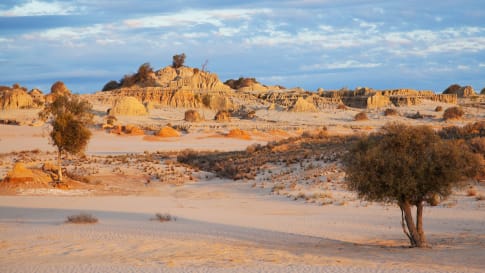
Uncovering the ancient history of Aboriginal Australia
For small group escorted tours of Australia in Queensland, Victoria, New South Wales, South Australia, Tasmania, Western Australia and the Northern Territory a guide on Aboriginal culture for mature and senior travellers.
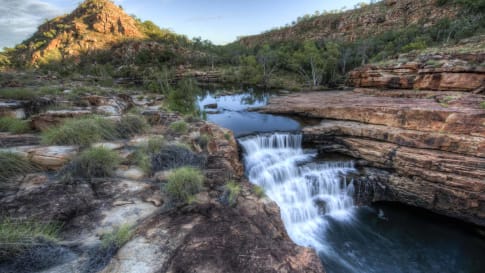
Wet and dry seasons in the Kimberley, Australia
Learn about the wet and dry season in the Kimberley to support your understanding of the Aboriginal communities lifestyle as you explore on a small group package tour for mature and senior travelers exploring as a couple or solo traveller. Read our peace of mind statement for post covid-19 travel.
